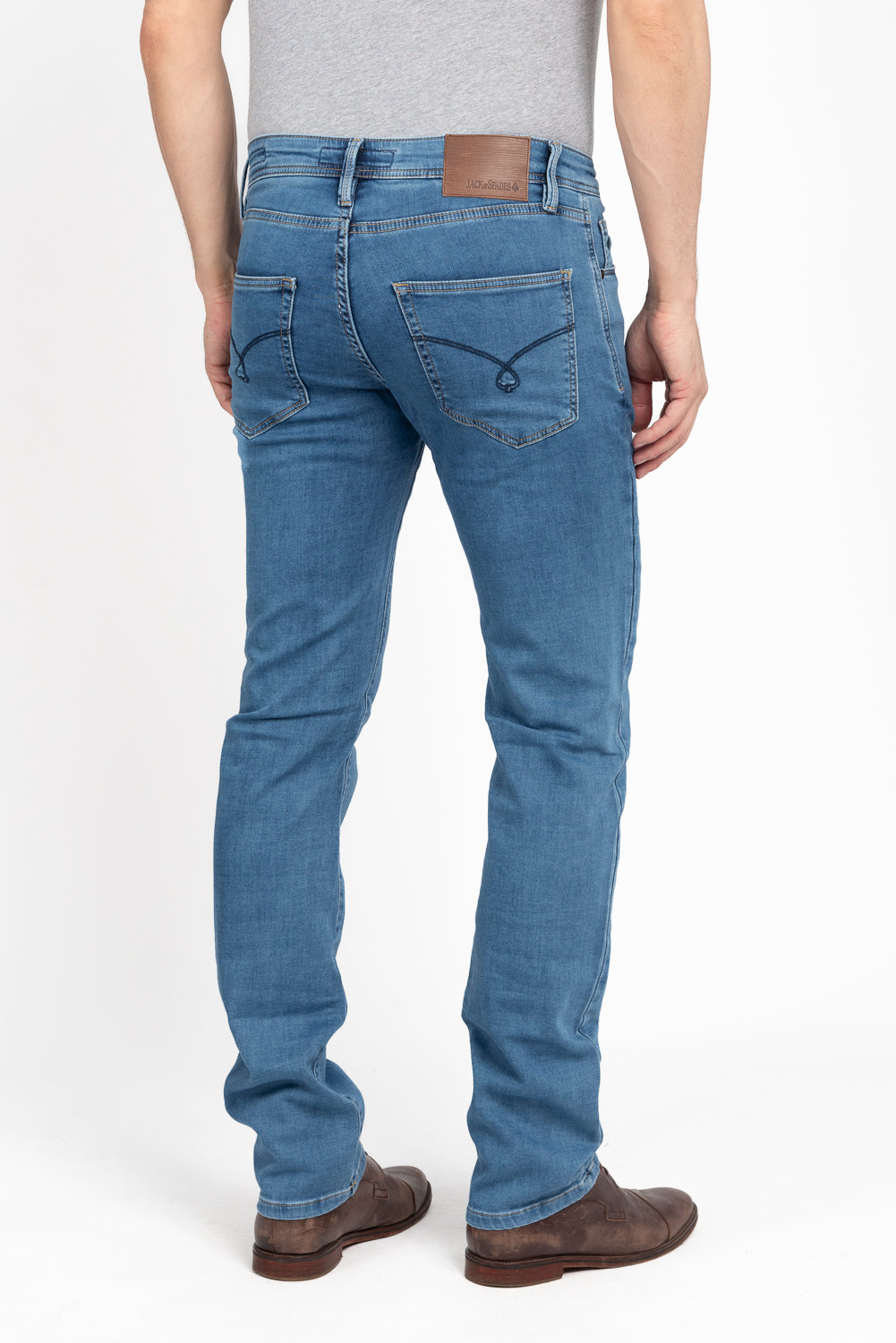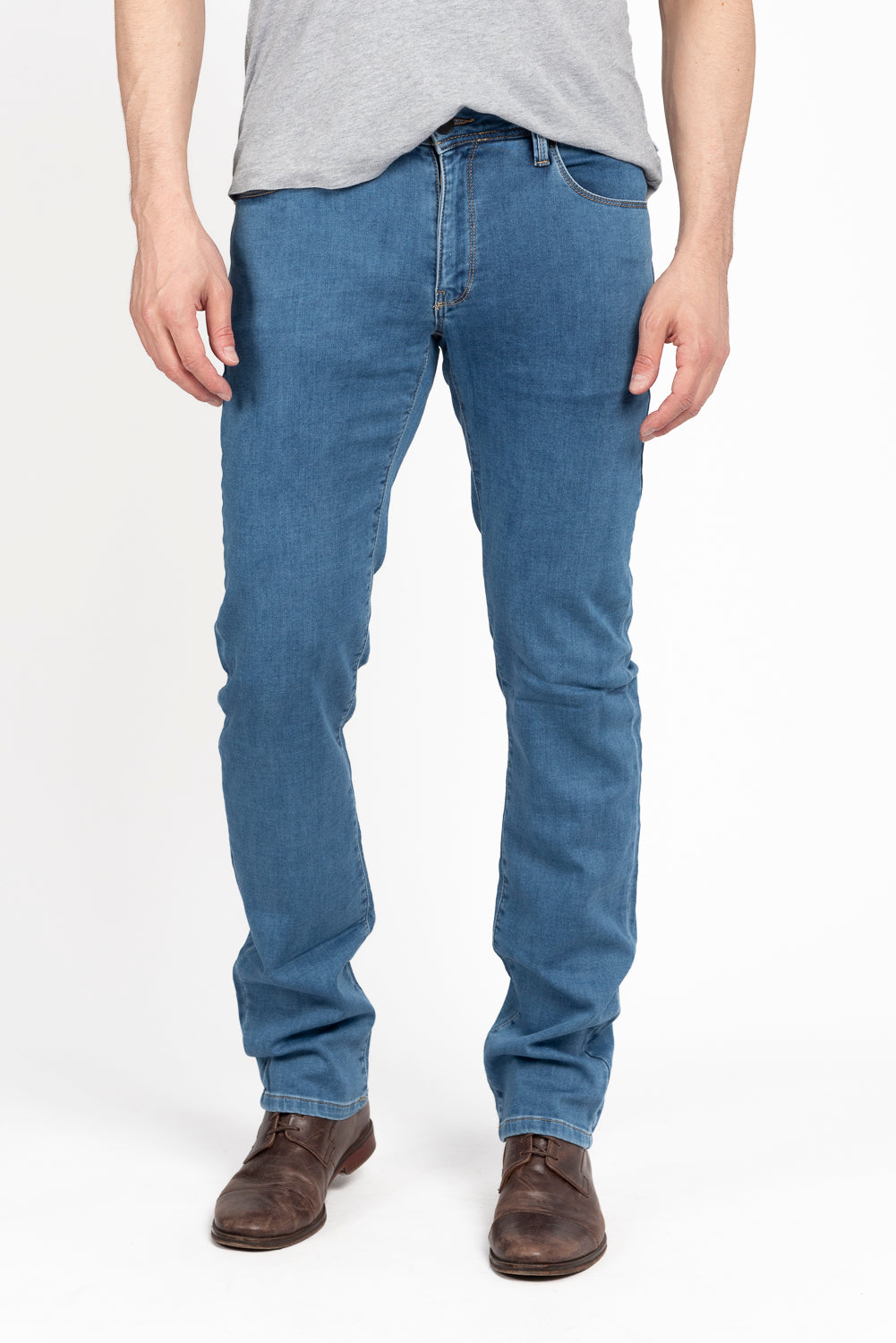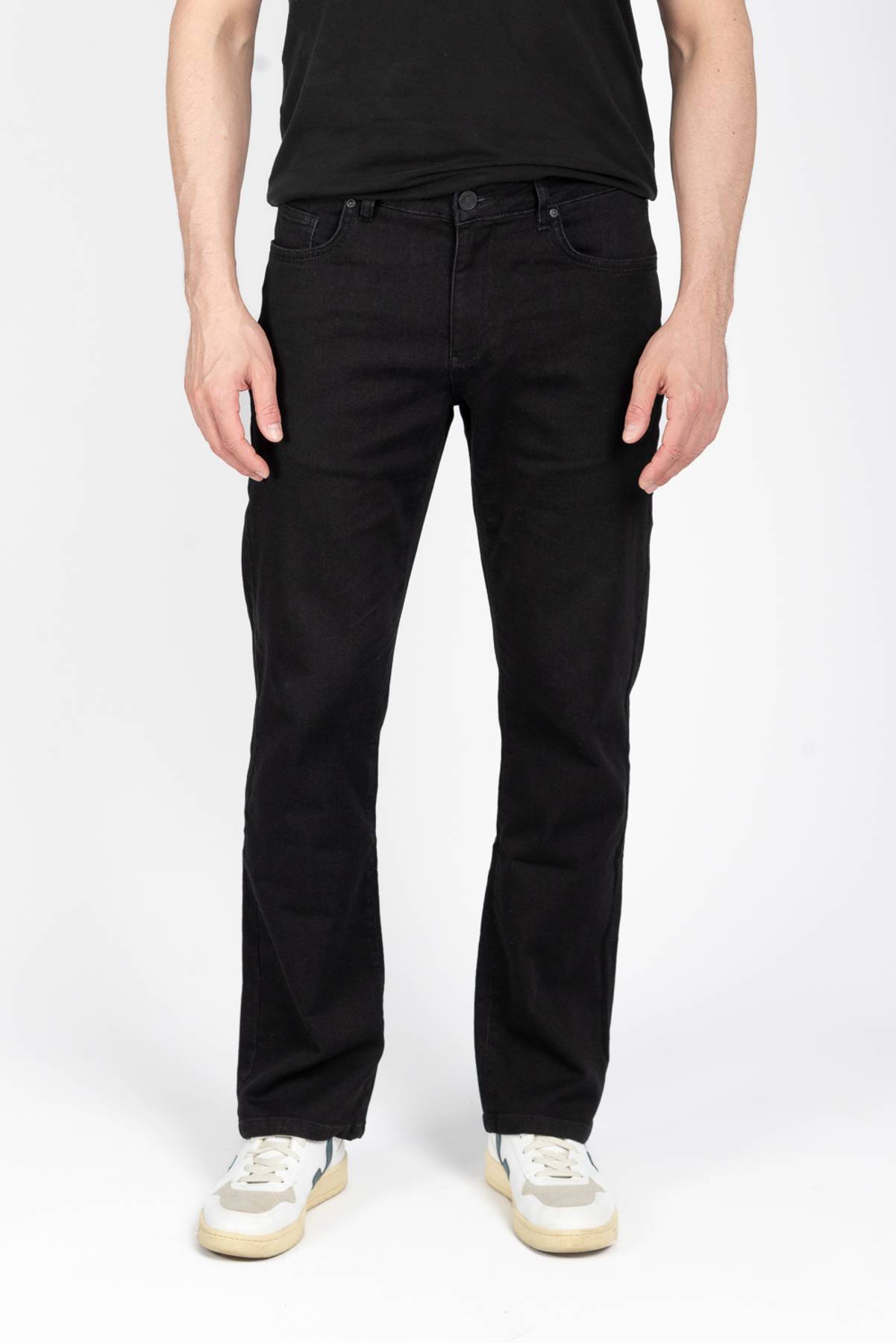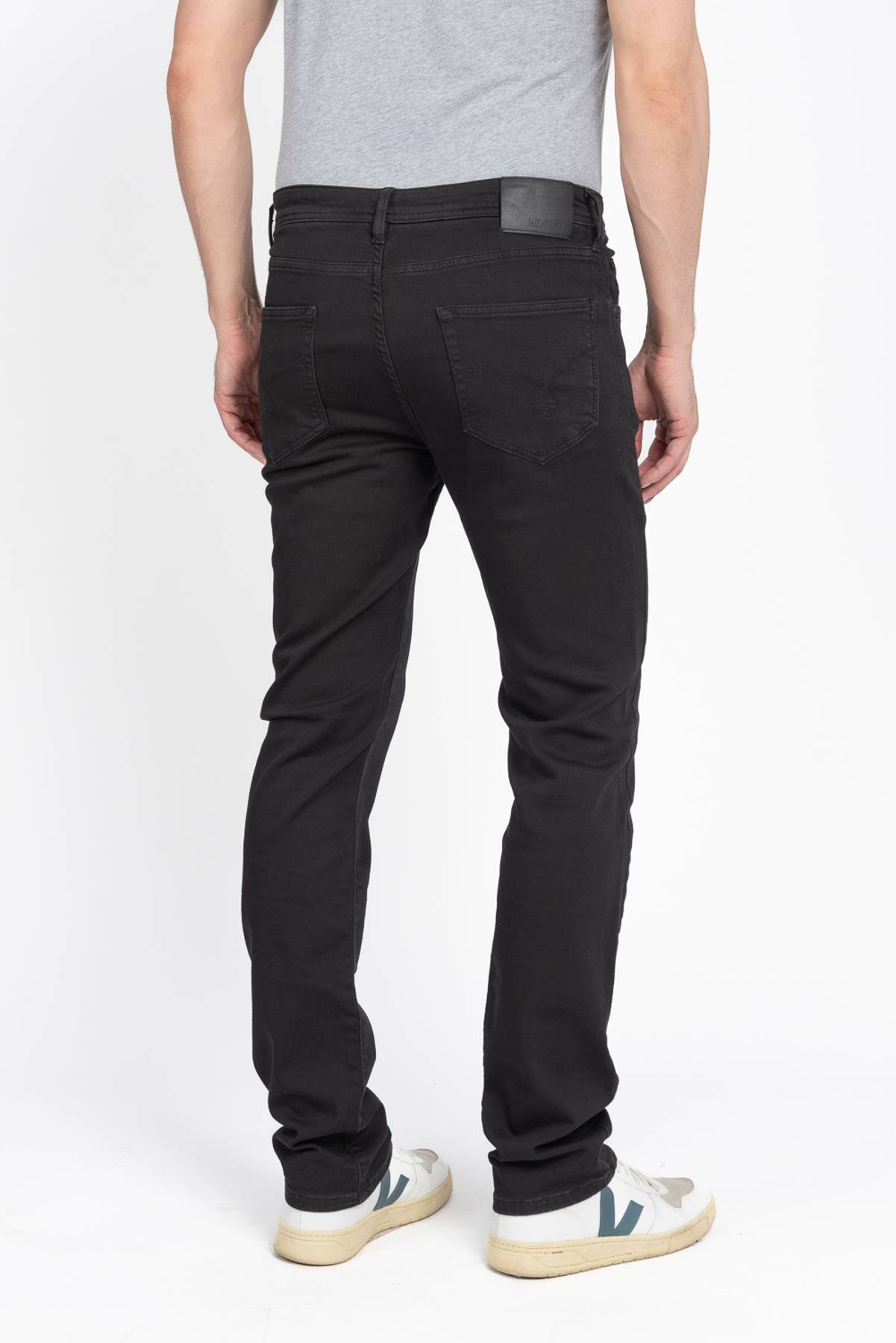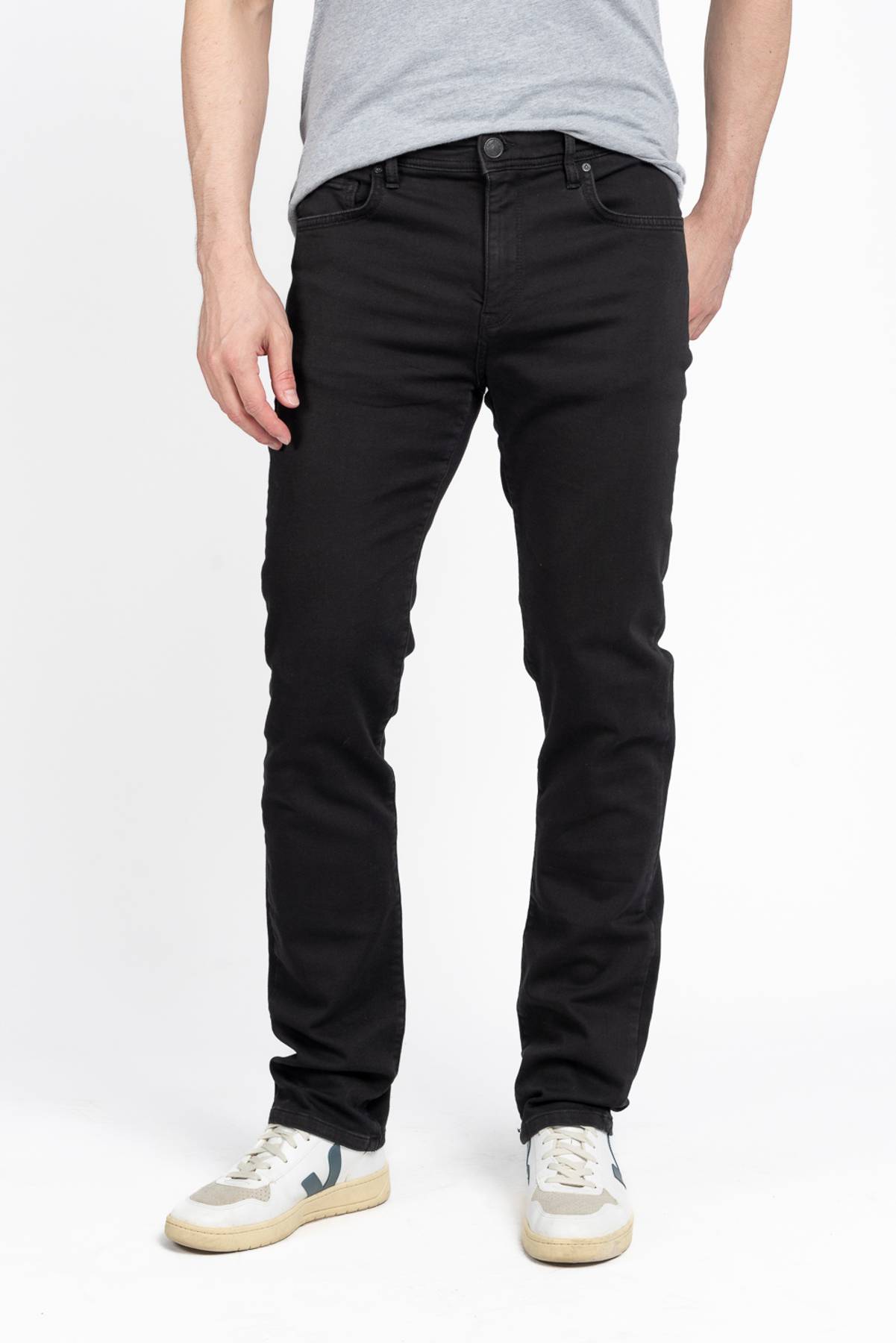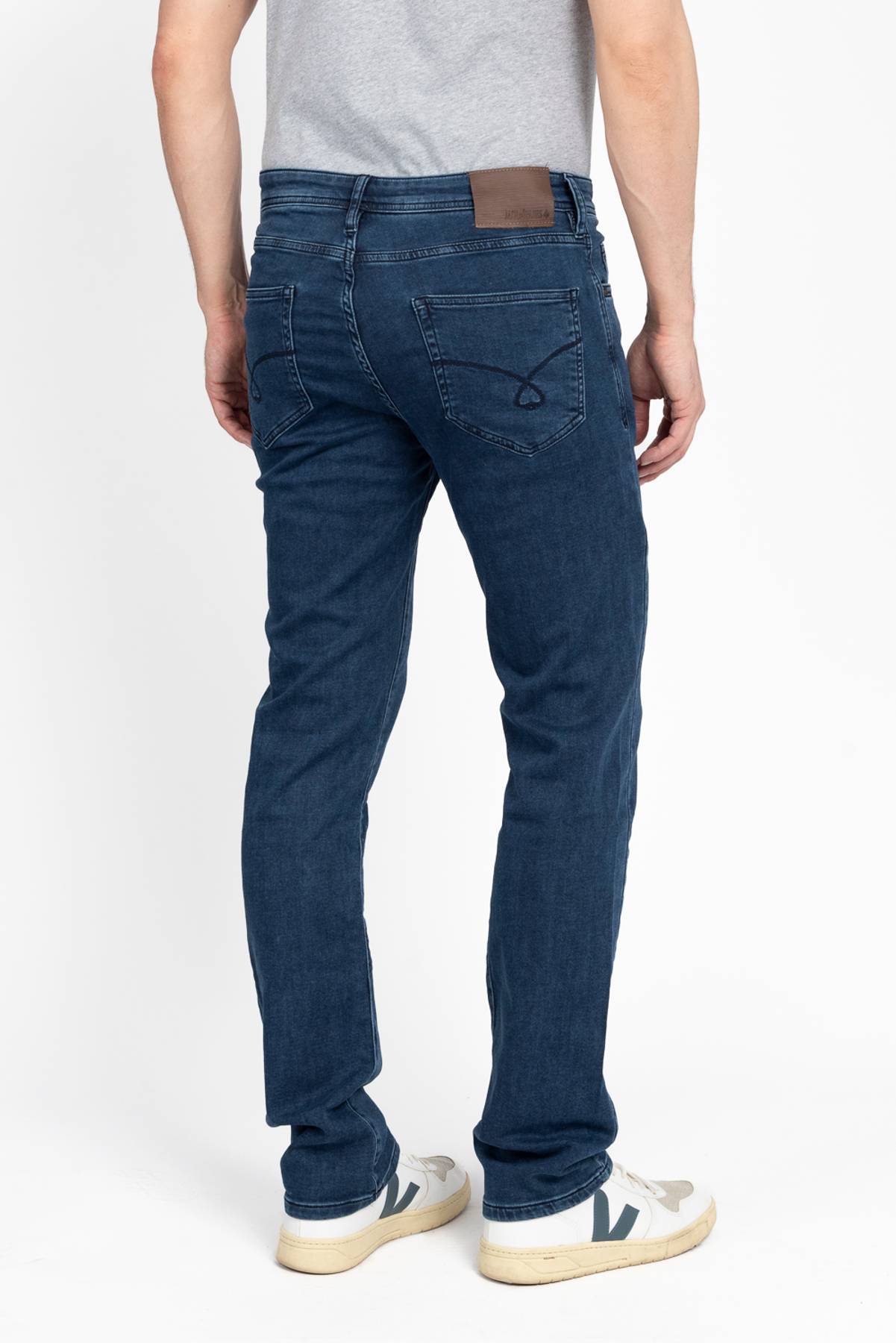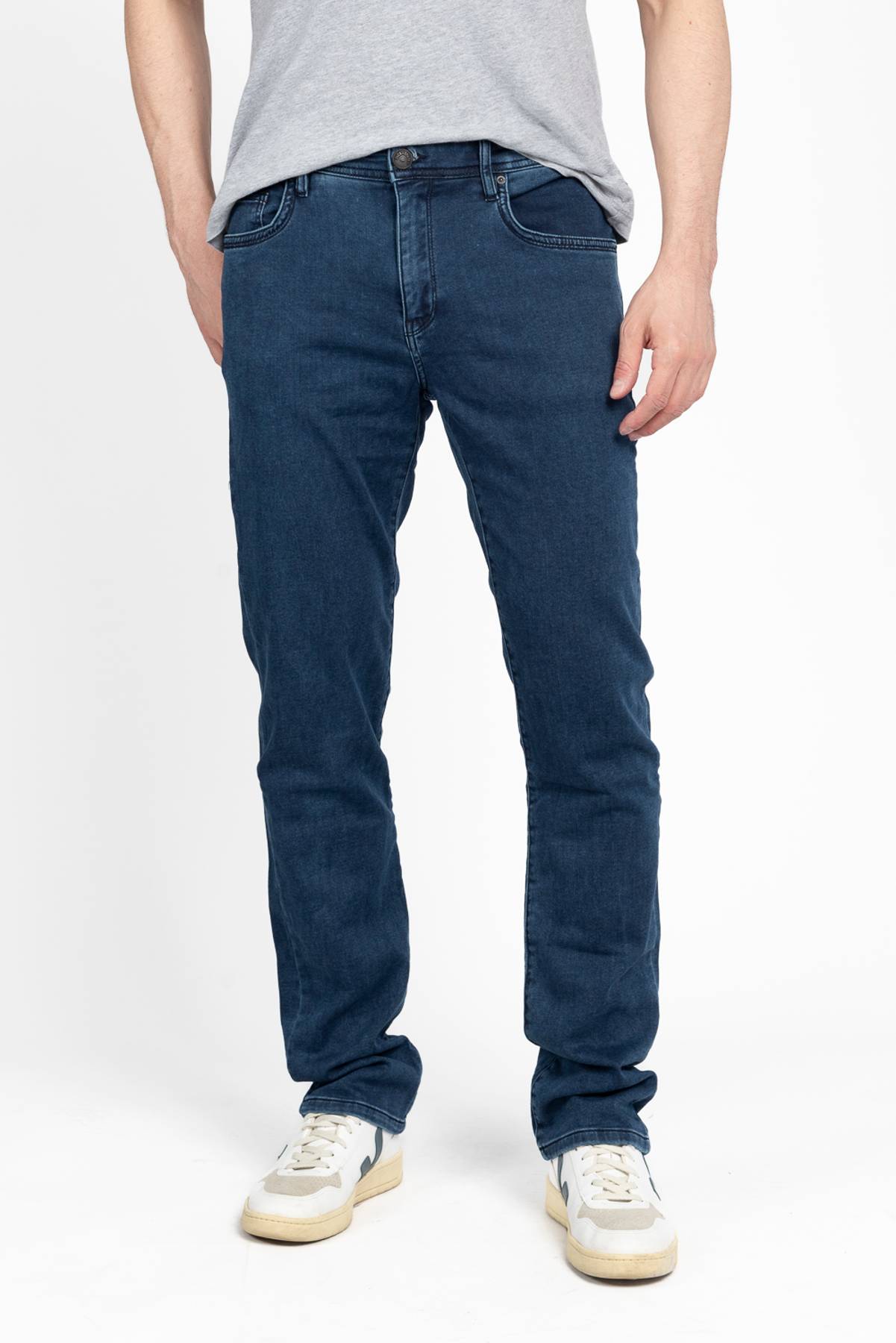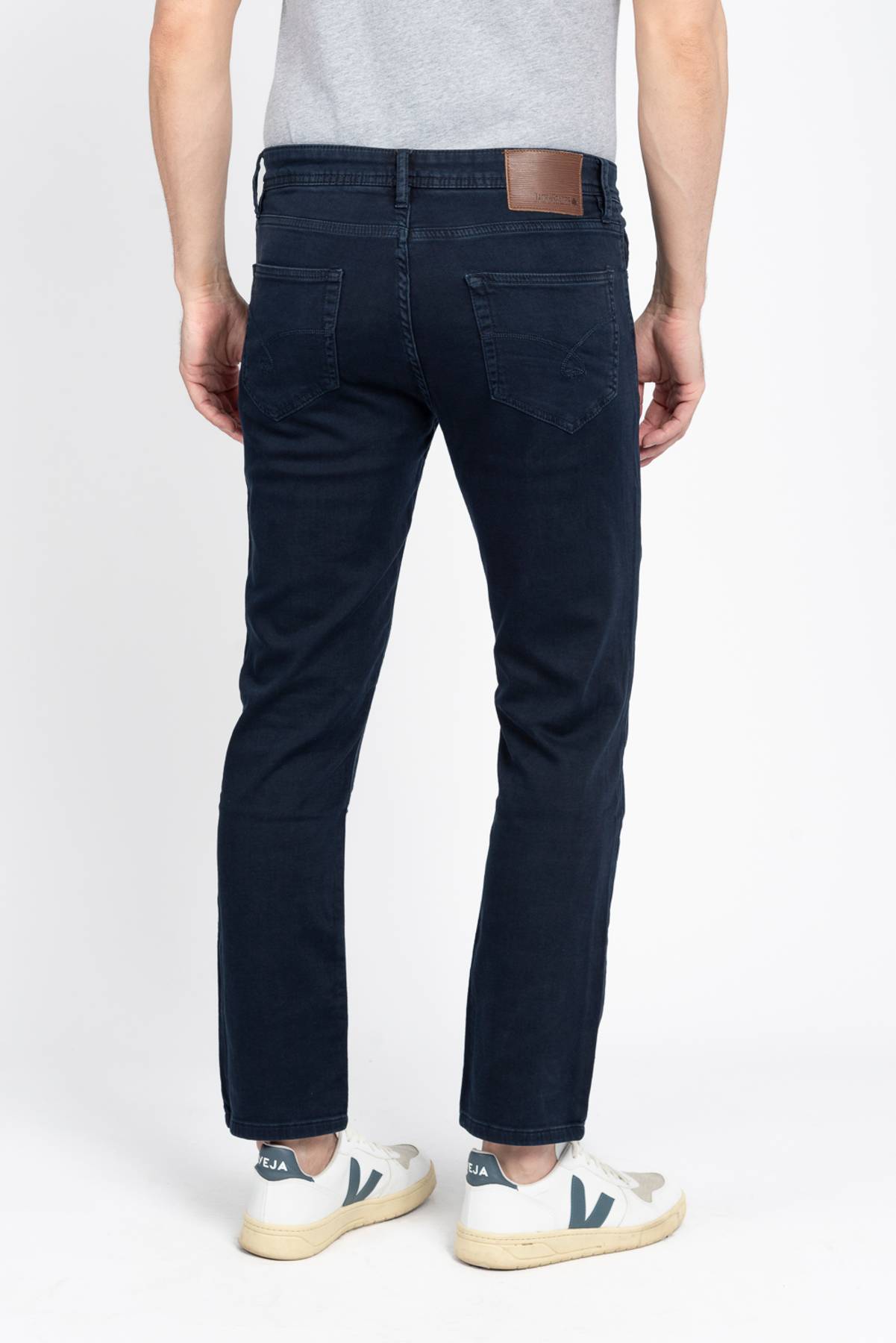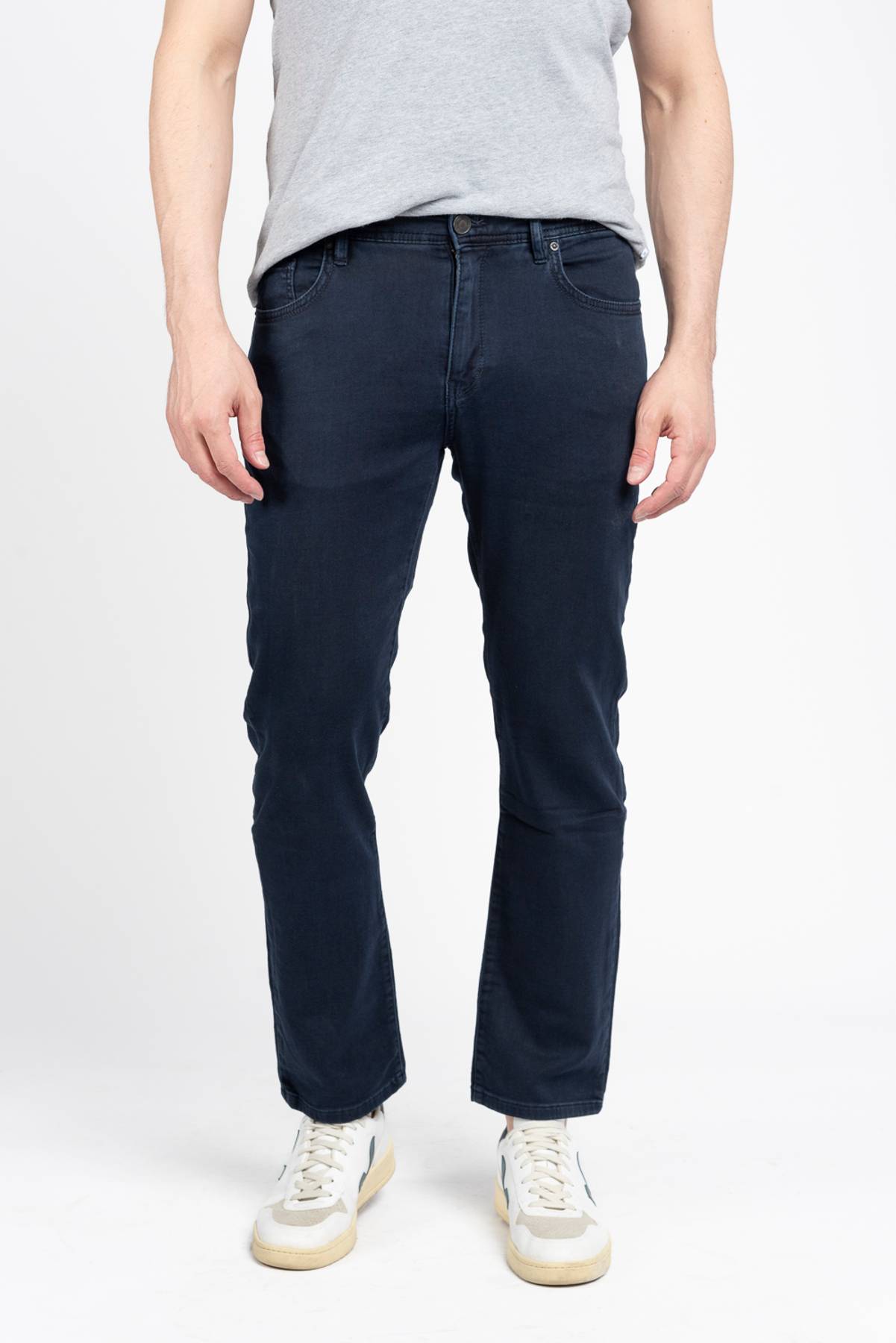Jeans are a staple in almost everyone's wardrobe, but finding the right fit can feel like solving a puzzle. One key factor that makes a huge difference? The rise on jeans. Whether you’re into low-rise, mid-rise, or high-rise, understanding the different options can help you choose a pair that not only fits well but also complements your body type and style. In this guide, we’ll break down everything you need to know about jean rises and how to pick the perfect one for you.
Key Takeaways
- Low-rise jeans sit below the waist and are great for casual, laid-back looks.
- Mid-rise jeans offer a balanced fit, sitting just at or slightly below the natural waistline.
- High-rise jeans provide added support and are ideal for creating a more defined waist.
- Choosing the right rise depends on your body type and personal comfort preferences.
- Accurate measurements of both front and back rise are essential for a perfect fit.
Understanding the Different Rises on Jeans

What Is a Low Rise and Who Should Wear It?
Low-rise jeans sit well below the natural waistline, typically around the hips. These jeans are often associated with a casual, laid-back vibe and were especially popular in the early 2000s. Low-rise jeans are ideal for those who want to highlight their hips or create a longer torso appearance. However, they may not be the most forgiving for all body types, especially if you prefer more coverage or support around the midsection. If you're choosing low-rise jeans, keep in mind that they pair well with shorter tops or cropped styles to maintain balance.
The Versatility of Mid-Rise Jeans
Mid-rise jeans are a classic choice and sit right at or slightly below the natural waistline. They offer a balanced look that works for most body shapes, making them a wardrobe staple. These jeans are great for everyday wear because they provide enough coverage without feeling restrictive. Whether you're dressing up with a blouse or keeping it casual with a t-shirt, mid-rise jeans offer flexibility in styling. For those unsure about which rise to choose, mid-rise is often a safe and flattering option.
High-Rise Jeans: Benefits and Styling Tips
High-rise jeans sit above the natural waistline, often reaching the belly button or higher. This rise is perfect for creating the illusion of longer legs and a cinched waist. High-rise jeans are especially popular for their ability to provide a secure and comfortable fit, making them a favorite for many. When styling high-rise jeans, consider tucking in your top or pairing them with a cropped sweater to emphasize the waist. They work well for both casual and more polished outfits, offering a timeless and flattering silhouette.
How to Choose the Right Rise for Your Body Type

Best Rises for Apple-Shaped Bodies
If you have an apple-shaped body, your midsection is typically fuller, and your legs are often slimmer. To balance this out, mid-rise jeans are a fantastic option. They sit comfortably at the natural waist and avoid drawing attention to the tummy area. High-rise jeans can also work wonders, as they provide support and create a smooth silhouette. Avoid low-rise styles, as they can emphasize the midsection in a way you might not find flattering.
Key Tips:
- Look for a rise of 9-11 inches for optimal coverage.
- Stretchy fabrics can help ensure a snug yet comfortable fit.
- Jeans with a wider waistband can prevent digging into the waist.
Flattering Rises for Hourglass Figures
Hourglass figures are defined by a balanced bust and hips with a well-defined waist. High-rise jeans are often a go-to choice because they highlight the waistline beautifully. Mid-rise jeans are another versatile option, offering a flattering fit without overshadowing your natural curves. Low-rise jeans can work too, but they may not accentuate your waist as much as higher rises.
Key Tips:
- High-rise jeans with a rise of 10 inches or more can enhance your waist.
- Opt for styles with a contoured waistband to avoid gaps at the back.
- Stretch denim can help hug your curves comfortably.
Finding the Perfect Rise for Petite Frames
Petite frames often benefit from high-rise jeans, as they create the illusion of longer legs and a taller silhouette. Mid-rise jeans can also work, especially if they sit just above the hips. Low-rise jeans, however, may make your legs appear shorter, which is something you might want to avoid.
Key Tips:
- Choose a rise of 9 inches or higher to elongate your frame.
- Tailoring the hem can ensure the right length for your height.
- Avoid overly bulky designs that could overwhelm your proportions.
Picking the right rise is all about finding what makes you feel confident and comfortable. Whether you go for high-rise, mid-rise, or low-rise jeans, the key is to consider your unique shape and how the jeans fit your lifestyle.
The Impact of Rise on Comfort and Style
How Rise Affects Everyday Wear
The rise of your jeans isn't just a minor detail—it can make or break how comfortable you feel throughout the day. Low-rise jeans, for instance, sit below the natural waistline, which can feel less restrictive but might require constant adjusting if you're moving around a lot. On the other hand, high-rise jeans provide more coverage and support, making them ideal for activities that involve bending or sitting for long periods. Mid-rise jeans strike a balance, offering enough support without feeling too restrictive. The key is finding a rise that aligns with your daily activities and comfort preferences.
Styling Tips for Different Rises
Each rise has its unique styling possibilities:
- Low-Rise Jeans: Pair them with crop tops or fitted tees for a laid-back, youthful look. Avoid overly long tops, as they can make your torso look shorter.
- Mid-Rise Jeans: These work well with almost anything. Tuck in a blouse for a polished vibe or wear them with a relaxed sweater for casual days.
- High-Rise Jeans: Perfect for tucking in tops to highlight your waist. Try them with a bodysuit or a tucked-in shirt for a sleek, streamlined outfit.
The trick is to mix and match based on the occasion and your personal style.
Balancing Comfort and Fashion
Finding the right rise isn't just about how it looks—it's about how it feels. A rise that's too low might dig into your hips, while one that's too high could feel constricting around the waist. When shopping for jeans, always try them on and move around to test their comfort. Sit, bend, and stretch to see how they feel in different positions. A comfortable pair of jeans should move with you, not against you.
Comfort doesn't have to mean sacrificing style. With the variety of rises available today, you can easily find a pair that feels great and looks amazing. From high-waisted jeans for a versatile day-to-night look to edgy low-rise options, there's something for everyone.
Measuring and Understanding Jean Rise
How to Measure Front and Back Rise
Measuring the rise of your jeans is a simple yet crucial step to ensure a perfect fit. Here’s how you can do it:
- Lay the jeans flat: Place your jeans on a flat surface with the front side up, smoothing out any wrinkles.
- Measure the front rise: Using a fabric tape measure, start at the crotch seam (where all the fabric meets) and measure straight up to the top of the front waistband.
- Flip the jeans over: For the back rise, turn the jeans over and repeat the process, measuring from the crotch seam to the top of the back waistband.
Pro Tip: Always measure jeans that haven’t been stretched out from wear. This ensures accurate measurements.
Common Mistakes When Measuring Rise
Even though measuring rise sounds straightforward, there are some common errors people make:
- Measuring stretched-out fabric: Worn jeans can stretch over time, leading to inaccurate measurements. Always measure fresh or freshly laundered jeans.
- Not measuring straight: Ensure the tape measure stays straight and doesn’t curve along the fabric.
- Confusing front and back rise: Remember, the back rise is typically longer than the front rise to accommodate your body’s shape.
Avoiding these mistakes can save you from buying jeans that don’t fit as expected.
Why Accurate Measurements Matter
A well-measured rise can make the difference between jeans that feel like they’re made for you and ones that constantly need adjusting.
The rise of your jeans directly impacts both comfort and style. A higher rise can elongate your legs and accentuate your waist, while a lower rise offers a more casual, laid-back vibe. Understanding your measurements ensures you pick jeans that work with your body type and personal style.
For more insights into how rise affects fit and style, check out key features of jeans for men.
Styling Your Jeans Based on Rise
Tops That Pair Well with Low-Rise Jeans
Low-rise jeans sit a couple of inches below the navel, which makes them perfect for showing off your midsection. Pair them with cropped tops or fitted tank tops to create a balanced look. For a more relaxed vibe, oversized sweaters or button-down shirts can be tucked in slightly at the front. Avoid pairing low-rise jeans with long, untucked tops, as this can make your proportions look off.
Mid-Rise Jeans for a Balanced Look
Mid-rise jeans are the ultimate in versatility. They sit at your natural waist, making them ideal for almost any top length. Try pairing them with casual T-shirts, flowy blouses, or even structured blazers. If you’re aiming for a polished look, tuck in your shirt to emphasize your waist. For a laid-back style, opt for a half-tuck or leave your top untucked altogether. Mid-rise jeans are a great match for wide jeans styles too, adding balance to their flowy silhouette.
High-Rise Jeans and Tucked-In Styles
High-rise jeans are all about elongating your legs and defining your waist. They pair beautifully with tucked-in tops, whether it’s a crisp button-down, a knit sweater, or a casual tee. For an extra touch of style, you can add a belt to highlight your waist further. Crop tops also work wonderfully with high-rise jeans, creating a seamless and flattering outfit. When it comes to layering, shorter jackets or blazers complement the high-rise silhouette best.
A quick tip: High-rise jeans with some stretch fabric can keep you comfortable while maintaining their shape throughout the day.
Exploring the Evolution of Jean Rises
The History of Low-Rise Jeans
Low-rise jeans burst onto the scene in the 1960s, becoming a symbol of rebellion and counterculture. By the early 2000s, they were synonymous with pop culture, thanks to celebrities flaunting them on red carpets and in music videos. These jeans sat well below the waist, often paired with crop tops to show off midsections. While undeniably trendy, they weren’t always the most forgiving or comfortable choice for everyone.
The Rise of High-Waisted Denim
High-waisted jeans, often called "mom jeans," have a much older history, dating back to the 1940s and 50s when they were a practical choice for workers. Fast forward to the 2010s, and these jeans made a massive comeback, blending retro vibes with modern fits. Their ability to elongate the legs and cinch the waist has made them a staple for many body types. Today, they’re celebrated for their comfort and versatility, working with everything from tucked-in blouses to oversized sweaters.
Why Mid-Rise Jeans Remain a Classic
Mid-rise jeans have always been the steady middle ground. Emerging as a popular choice in the late 20th century, they offered a balance between the boldness of low-rise and the coverage of high-rise styles. Mid-rise jeans sit comfortably at the natural waistline, making them a go-to for casual and professional settings alike. Their timeless appeal lies in their adaptability—they work with nearly any outfit and body type, making them a mainstay in wardrobes across generations.
The evolution of jean rises reflects not just changing fashion trends but also shifts in societal values, body positivity, and the demand for comfort. Jeans have always been more than just clothing—they’re a cultural statement.
Rise on Jeans and Fabric Choices
Stretch Denim and Its Role in Fit
Stretch denim has become a game-changer in the world of jeans. The inclusion of materials like elastane or spandex (usually 2-3%) allows jeans to mold to your body, offering a snug yet flexible fit. This is especially useful for high-rise jeans, as they often need to contour the waist without digging in. Stretch fabric ensures comfort without sacrificing style, making it a must-have for all-day wear.
Choosing the Right Fabric for High-Rise Jeans
When it comes to high-rise jeans, fabric choice is everything. Look for blends that balance structure and flexibility, like cotton with a touch of stretch. This combination helps maintain the high-rise shape while providing enough give for comfort. For a polished look, consider thicker denim with minimal stretch—it holds its form better and offers a more tailored appearance. High-rise jeans with a leg-lengthening bootcut often incorporate these fabrics to enhance their flattering fit.
How Fabric Affects the Look of Low-Rise Jeans
Low-rise jeans are all about the casual, laid-back vibe, and fabric plays a big role in achieving this. Lightweight denim with a softer feel often works best, as it drapes naturally around the hips. Stretch is less critical here, but a small percentage can help keep the fit secure without being restrictive. Distressed or washed fabrics also complement the relaxed aesthetic that low-rise jeans are known for.
When picking jeans, remember that the fabric does more than just affect comfort—it shapes the overall look and feel of the rise. Choosing the right material can make or break your perfect pair.
Wrapping It Up
Finding the perfect pair of jeans can feel like a never-ending quest, but it doesn’t have to be. Once you know your body type, preferred rise, and favorite style, the process becomes so much easier. Remember, it’s all about what makes you feel good and fits comfortably. Don’t be afraid to try on different options or step out of your comfort zone with a new cut or wash. At the end of the day, the right pair of jeans is the one that makes you feel like your best self. So go ahead—find your fit and rock it with confidence!
Frequently Asked Questions
What are low-rise jeans, and who should wear them?
Low-rise jeans sit below your hips and are great for showing off your waistline. They work well for people with a shorter torso or those who want a casual, relaxed look.
Why are mid-rise jeans so popular?
Mid-rise jeans sit at your natural waist, making them comfortable and versatile. They pair well with almost any top and suit most body types.
What are the benefits of high-rise jeans?
High-rise jeans provide more coverage, help define your waist, and can make your legs look longer. They're perfect for a polished, tucked-in style.
How do I measure the rise of my jeans?
To measure the rise, lay your jeans flat and measure from the crotch seam to the top of the waistband for the front rise. For the back rise, measure from the same crotch seam to the back waistband.
Which rise is best for apple-shaped bodies?
High-rise jeans are ideal for apple-shaped bodies as they provide tummy control and balance out proportions.
Can fabric choice affect how jeans fit?
Yes, fabric matters a lot! Stretch denim adds comfort and flexibility, while rigid denim gives a more structured look.

